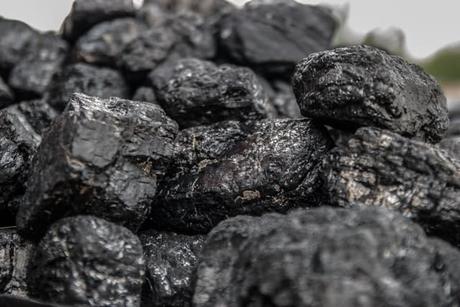What are Fossil Fuels?
Fossil fuel is a term used to refer to hydrocarbons contained in natural resources. It is a general term used for combustible geological deposits of organic matter formed from decayed plant and animal remains. These dead organisms contain energy forged through original photosynthesis from plants. They get converted to various fossil fuels which are formed by exposure to heat and pressure in the earth’s crust over millions of years.
Some of the life forms that decay and turn into fossil fuels include zooplankton, phytoplankton, and terrestrial vegetation. The main fossil fuels are coal, natural gas, and crude oil. They occur in all three states of matter. Coal is in solid form, natural gas is a gas, and crude oil is in liquid state.

Generally, fossil fuels are non-renewable sources which mean that their reserves can be depleted from the earth’s surface. In consequence of this, human beings should seek to use renewable sources of energy such as wind, hydro-electric, and solar energy to conserve these non-renewable resources.
Furthermore, due to the carbon composition of these fossil fuels, limiting their use can ensure a balance in the air composition in the atmosphere thus reducing the effects of global warming. This article seeks to expound on the various types of fossil fuels while giving their description and characteristics.
Examples of Fossil Fuels
1. Coal
This fossil fuel is formed when land vegetation buried deep by sediments in the ground starts to decompose slowly through anaerobic decomposition. During the Carboniferous Period, in the Earth’s tropics, vast forests of fern-like trees and other leafy plants were growing.
As they died, they formed large deposits which have over millions of years decomposed to form coal. It is solid in nature and is found trapped inside a deeply buried subterranean reservoir rock and source rock. The hydrocarbon material is found in the source rock whereas the reservoir seals it in.
Coal is extracted from the earth through mining. The process of mining is done through various ways such as open pit mining which entails surface mining for shallowly found coal mines. Or through underground mining for instances where the coal mines are deep in the Earth’s surface.
Treatment is the process that follows mining. The coal ore mined is treated to remove impurities and make it a better and efficient source of energy. The purity of this fossil fuel is determined by the count of carbon present in the coal mined. Accordingly, there are various forms of coal in terms of purity.
Anthracite is the purest form of coal with a carbon content of 97%. Bituminous and sub-bituminous are the second and third purest forms of coal respectively. The most impure form of coal is lignite. The depth of these forms of coal are inversely proportional to their purity.
Therefore, lignite is found on the surface with anthracite being the most difficult to extract due to its occurrence deep in the earth’s surface. The extraction of coal leads to release of harmful pollutants such as mercury, which is very volatile and adds to the composition of the atmosphere. Sulfur dioxide, a poisonous gas, is also released in the process of mining of coal. It is known as a chief contributor to acid rain.
Nevertheless, through desulphurization, this gas can be removed from the atmosphere. Nitrogen Oxide is also a pollutant that is mostly harmful to marine life because it causes eutrophication – a process that leads to algae and water hyacinth growth which considerably reduces the oxygen supply for marine life. Because of the greenhouse gases released in the processes of mining and using coal, it is linked to the damage of the ozone layer.
Coal is a source of energy used widely. It is the primary source of fuel for production of electricity and provides over 40% of energy in the United States. It is mostly produced in countries such as China and United States among others at 45% and 12% respectively. It was one of the factors that enabled the Industrial Revolution to grow in the 19th century.
When heated, the fossil fuel produced coke which was used to heat water to high temperatures to produce steam. The fossil fuel is used in driving steam trains and manufacturing industries. It is heavily relied on by the iron and steel industry. It is also used in homes for basic provision of heat for cooking and for other domestic purposes. Its byproducts are also used for cosmetic uses such as production of petroleum jelly.

2. Oil
Oil is extracted from oil reserves which are formed from millions of years of decomposition of plant and animal remains. It is more specifically formed from the remains of marine micro-organisms that died millions of years ago. Notably, it is composed of the swampy forests that were alive millions of years ago and the ever present algae and sea creatures. As they died, their remains sank and mixed with the sediments on the floor of the sea.
Over the years, the sediments became hard rocks and eventually became oil. This is the only liquid fossil fuel which normally exists in watery atmosphere due its state. It is underground below the hard water table. As such, it is found not only below land but also below seas and other large water bodies. This is because when it is between an impervious and non-porous rock, it is trapped and thus stays underground.
Due to their deep depths, they are extracted by use of huge pumps which pump the crude oil to the surface. Oil is less dense than rock so it tends to move upwards. Due to being under pressure, once drilled the oil comes rushing to the surface. It can also be found in shale and tar sands which are closer to the earth’s surface.
Once this is done, treatment follows which allows for refinery of the crude oil in oil refineries. As a result of refining, various forms of oil are realized. These include petrol, diesel, kerosene, aviation oil, lubricating oil, tar and other oil products.
Oil produces more energy than coal per unit weight and as such, is more preferred than coal for transportation. It is the primary source for the world’s transportation. The various derivatives of oil have myriad of uses. For instance, Petrol is used mainly to fuel and propel various models of transport such as cars, motorbikes and airplanes.
Diesel is also used to propel various modes of transport. However, it is more viscous than petrol and consequently, it used to power heavy duty motor vehicles such as trucks and lorries, diesel trains, generators, and ships. Kerosene is used to provide light through lamps. Other oil products include pesticides, fertilizers and plastics. In addition to this, oil is a raw material in the pharmaceutical industries.
Oil has one of the most variable prices. It is not yet known how much oil remains to be extracted from the earth’s surface. Also, countries emerge annually with traces of oil reserves and thus, causing the shift of the oil economy in the global market.
3. Natural Gas
This is formed when organic matter is heated and compressed under a lot of pressure for a long period of time. The molecular composition of this fossil fuel is free and disintegrated thus the presence of a gas known as natural gas. This fossil fuel is believed to be formed from the remains of marine micro-organisms.
The anaerobic decomposition of the organic material composed of plant and animal remains leads to the formation of Kerogen. This material upon further heating assumes three states. The first state is solid which is where coal is formed. Upon further heating, the kerogen changes to liquid which is crude oil and finally turns to gas which is natural gas.
This is composed of hydrocarbons which are gaseous in nature, the most common being methane, a very flammable gas. Like oil, it is lighter than the rock surface but is mostly trapped. Therefore, when drilled, it moves upwards to the surface. Still, since it can’t be extracted or trapped, it is generated from oil. The final stage of fuel formation is catagenesis.
Natural gas is used in cooking and can also be used in powering automobiles either as Compressed Natural Gas (CNG) or as Liquefied Petroleum Gas (LPG). Moreover, it is used to produce heat and electricity for buildings and industries. It can also be used in the manufacture of fertilizer, paint and plastic.
Fossil fuels are mostly disliked for their harmful releases of carbon into the atmosphere. Nonetheless, natural gas is the cleanest type of fossil fuel since there are no extra compounds attached that will pollute the environment and does not cause fumes. Consequently, it is preferred to coal and oil.

